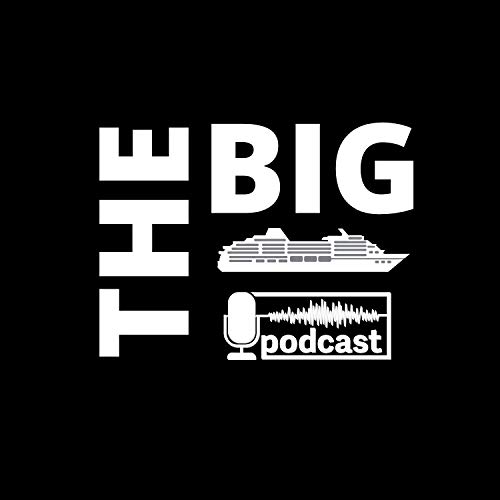Carpathia

Ship’s Particulars
- Tonnage: 13,555 gross registered tons
- Length: 164.58m (540ft)
- Width: 19.65m (64.5ft)
- Number of funnels: 1
- Number of masts: 4
- Hull: Steel
- Propulsion: Twin-screw
- Powerplant: Eight-cylindered quadruple-expansion reciprocating engines
- Service speed: 14 knots
- Builder: Swan & Hunter, Wallsend-on-Tyne (engines by Wallsend Slipway Co.Ltd.)
- Launch date: 6 August 1902
- Passenger accommodation as built: 204 2nd class, 1,500 3rd class
- Passenger accommodation from 1905: 100 1st class, 200 2nd class, 2,250 3rd class
Service Career
Cunard’s RMS. Carpathia was a single funnel, four masted ship. She was designed for the Cunard immigration service, plying the North Atlantic between Europe and America. Built by Swan Hunter & Wigham Richardson in Newcastle, Carpathia’s first voyage departed Liverpool on 5 May 1903, bound for New York.
Cunard installed a high quality fit out aboard Carpathia, with third class accommodation being noticeably superior to what was offered on many rival liners of a similar size. Carpathia boasted numerous public rooms for third class passengers, as well as meals, which were included in the fare (this wasn’t always the case on other lines at the time).
In 1904, Carpathia’s primary route was changed to take in the Mediterranean service. A major internal refit saw Carpathia’s accommodation modified. The ship was able to carry 100 first class, 200 second class and an 2,250 third class post-refit. This is a huge number of people, meaning the relatively small Carpathia carried more passengers than the far larger QE2!
Carpathia & Titanic
Carpathia became famous across the world when she made a late night dash to rescue up the survivors of the ill-fated Titanic. Titanic struck an iceberg on 14 April 1912 at 11:40pm, causing the ship to sink early in the morning of 15 April 1912.
Realising the ship was domed, Titanic’s Master, Captain E. J. Smith, ordered the international distress signal C.Q.D (all stations – distress) to be sent on the wireless radio. With no nearby ships alerted, the Titanic’s radio operators also opted to send the newer S.O.S message; which wasn’t widely used at the time.
That same night, the Carpathia’s wireless operator, Harold Cottam, was listening to messages being sent to Titanic from Cape Cod, Massachusetts, where a Marconi wireless station was located. Cottam was actually off duty at the time, but had decided to listen in to the plethora of messages being sent to the White Star Liner.
Noting a lack of reply from Titanic, Carpathia’s operator decided to try and alert Titanic to this backlog of messages from Cape Cod. To do this, Cottam sent Titanic a message stating: “I say old man, do you know there is a lot of traffic for you at Cape Cod?”. The response from Titanic was clear and chilling: “We are sinking, come at once, this is C.Q.D, old man”.
Cottam alerted Captain Rostron, the Master of Carpathia, of the Titanic’s plight. Captain Rostron immediately set a course to Titanic’s last reported position, over 60 miles away. Travelling at it’s maximum speed, Carpathia made a heroic dash to save the Titanic survivors. Captain Rostron ordered all available steam to be diverted to the ship’s engines. Lighting and heating were reduced throughout the ship to free up steam that would have been used for hotel services, and redirect it to boost the speed of the engines.
Carpathia’s officers and crew negotiated surrounding ice fields on her journey. Other crew members were instructed to rig up electric lighting on the side of the ship and prepare vacant cabins for survivors. Cooks were awoken to prepare hot meals and beverages while the ship’s doctors were briefed.
At around 4:00am on 15 April 1912, Carpathia arrived at the scene. They identified the Titanic’s lifeboats in the water some distance away. During the morning, Carpathia collected all of the Titanic survivors. Tragically, over 1,500 people died aboard Titanic when the doomed ship went down, largely because there were not enough lifeboats carried aboard the White Star Liner (this was common practice at the time).
Having remained on site during the day, and with all survivors safely aboard, Carpathia made way to New York. The ship departed the site of the sinking, before a large storm front approached.
Once in New York, Titanic’s survivors were disembarked, and the true magnitude of the disaster became known. Captain Rostron and his crew were heralded as heroes for their actions that night. Captain Rostron went on to become a Commodore of the Cunard fleet and later commanded Aquitania.
Carpathia after Titanic
The now famous Carpathia continued to sail on her regular schedule, until the outbreak of World War I. During the war, she was requisitioned for military purposes and participated in several trooping convoys.
On 17 July, 1918 Carpathia was traveling in convoy when she was hit by two torpedoes near Fastnet, United Kingdom. Taking on water, the order was given to abandon ship.
A third torpedo struck the ship as the lifeboats were being manned, killing several crew members, and leading to Carpathia founding. The survivors were rescued by the Royal Navy.
Image source: Simplon Post Cards


